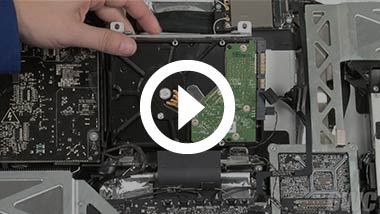
- #IMAC 2009 HARD DRIVE REPLACEMENT BLACK SCREEN MAC OS X#
- #IMAC 2009 HARD DRIVE REPLACEMENT BLACK SCREEN INSTALL#
- #IMAC 2009 HARD DRIVE REPLACEMENT BLACK SCREEN BLUETOOTH#
RAM: 4 GB, expandable to 16 GB using four 1066 MHz DDR3 SDRAM.L2 cache: 3 MB shared cache on CPU (6 MB on 3.33 GHz, 8 MB on i5/i7 models).CPU: 3.06/3.33 GHz Intel Core 2 Duo/2.66 quad-core i5 2.8 GHz quad-core i7 option.
#IMAC 2009 HARD DRIVE REPLACEMENT BLACK SCREEN MAC OS X#
Mac OS X 10.6 Snow Leopard compatibility.macOS 10.4 Mojave and later are not supported. Requires Mac OS X 10.6.1 Snow Leopard or later.
#IMAC 2009 HARD DRIVE REPLACEMENT BLACK SCREEN INSTALL#
PowerPC Macs won’t let you install OS X to a USB drive or choose it as your startup volume, although there is a work around for that. PowerPC Macs running any version of the Mac OS prior to 10.4.2 cannot mount GPT volumes. Both PowerPC and Intel Macs can boot from APM (Apple’s old partitioning scheme) hard drives, which is the format you must use to create a universal boot drive in Leopard. Only Macintel models can boot from GPT hard drives. Intel-based Macs use a partitioning scheme known as GPT. These iMacs shipped with OS X 10.6.1 Snow Leopard, and they are the oldest iMacs supported by macOS Sierra. The more powerful iMacs include a 1 TB hard drive. All the other models have GPUs with dedicated video memory. 256 MB of system RAM is dedicated to video. The entry-level iMac has 4 GB of RAM, a 500 GB hard drive, an 8x SuperDrive, Nvidia GeForce 9400M graphics, and Apple’s aluminum keyboard and Magic Mouse.

This is the first Mac to ship with Apple’s new Magic Mouse.
#IMAC 2009 HARD DRIVE REPLACEMENT BLACK SCREEN BLUETOOTH#
The Late 2009 iMacs have 4 USB 2.0 ports (one more than before), FireWire 800 (but not 400), gigabit ethernet, 802.11n WiFi, Bluetooth 2.1+EDR, an SD Card slot, and an 8x SuperDrive – as well as a slim keyboard with two USB 2.0 ports. This GPU is also used in the base 27″ model, and the top-end iMac has ATI Radeon HD 4850 graphics with 512 MB of video memory.

The base 21.5″ model uses the same Nvidia GeForce 9400 GPU found in most current Macs, and the step-up model has ATI Radeon HD 4670 graphics with 256 MB of dedicated memory. 8 GB for the previous model) using four 4 GB modules. 4 GB of RAM is now standard across the line, and maximum RAM doubles to 16 GB (vs. Build-to-order options include a 3.33 GHz Core 2 Duo CPU and a 2.8 GHz quad-core i7 the i7 supports HyperThreading, which allows each core to appear to the OS as two cores the i5 does not).

And the back is now aluminum instead of black plastic.Īpple has simplified things by starting the iMac with a 3.06 GHz and offering a 2.66 GHz quad-core i5 option for power users. Visually, the screen looks even bigger, as the glass now goes all the way to the edge of the computer – no more aluminum border around the display. One feature new to Apple’s desktop line is a built-in SD Card slot, which is on the right side below the SuperDrive. The smaller iMac has the same 1920 x 1080 pixel size as 1080i high-def television, and the 27″ beastie provides an incredible 2560 x 1440 pixels.īoth sizes are LED backlit, and the 27″ iMac also has Mini DisplayPort input, allowing another computer or video device (DVD or Blu-ray player) that supports DisplayPort to use the iMac’s screen (it’s not compatible with HDMI, DVI, or VGA). The Late 2009 iMac comes in 21.5″ and 27″ sizes, and the displays have the same 16:9 aspect ratio as HDTV (the Early 2009 iMac had 20″ and 24″ 16:10 aspect ratio displays).

The big news: Apple has introduced new screen sizes and a new display aspect ratio.


 0 kommentar(er)
0 kommentar(er)
